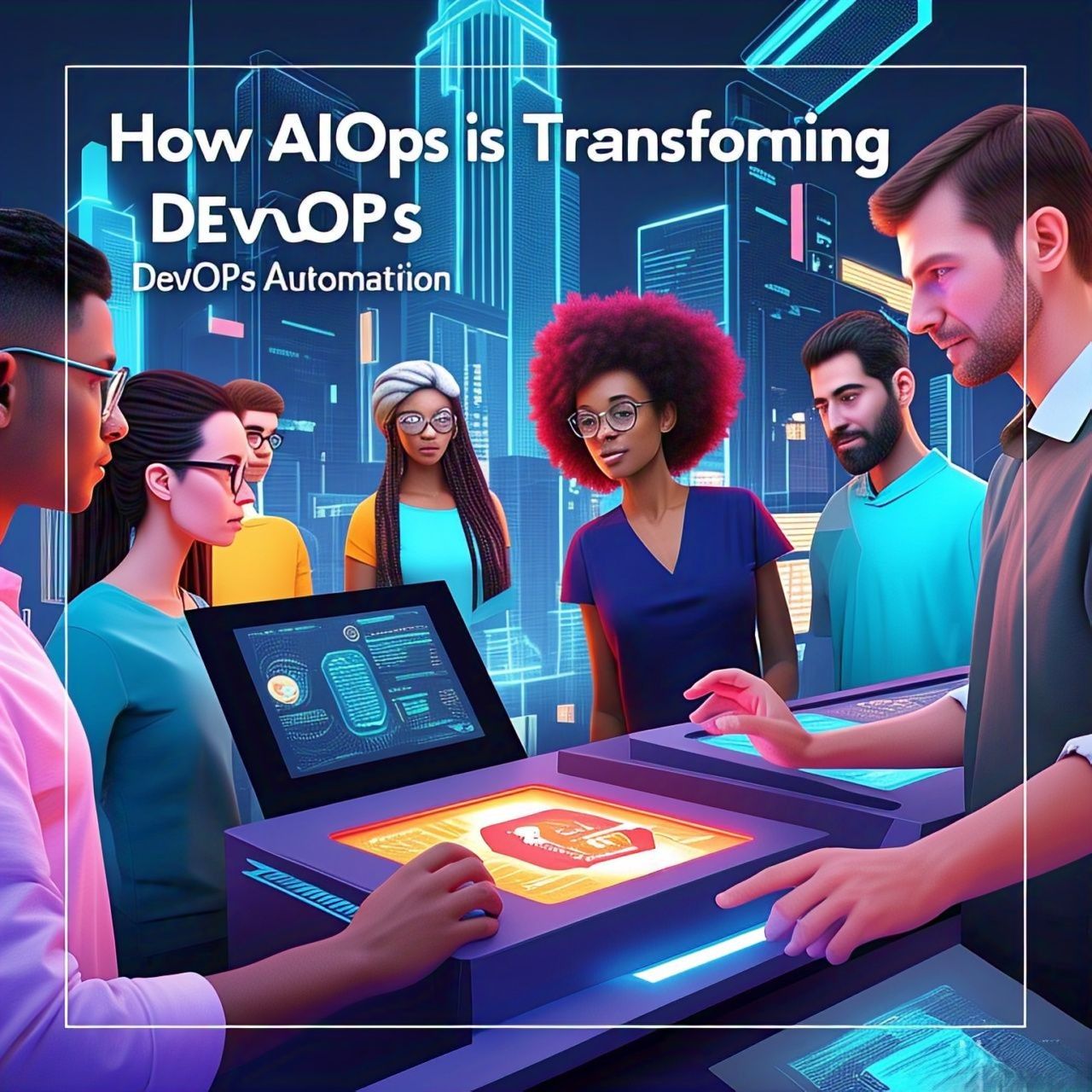How AIOps is Transforming DevOps Automation

In an era where digital transformation dictates business survival, the marriage of AIOps and DevOps is creating seismic shifts in how organizations build, deploy, and manage applications. With systems growing exponentially in complexity, traditional IT practices are buckling under pressure. Enter AIOps – the intelligent glue that’s transforming DevOps into a self-healing, predictive powerhouse. Let’s explore this paradigm shift in detail.
The Evolution of DevOps: Why AIOps Became Essential 🧩
DevOps revolutionized software delivery by breaking silos between development and operations teams. But as environments grew more dynamic (think microservices, Kubernetes, and hybrid clouds), traditional tools struggled with:
- Alert storms from monitoring tools (Nagios, Prometheus)
- Manual triaging of incidents across 10+ tools
- Reactive firefighting instead of proactive optimization
AIOps emerged as the answer, infusing AI/ML into DevOps workflows to handle modern IT’s "data tsunami" (often exceeding 1TB/day in large enterprises).
Core AIOps Capabilities Reshaping DevOps 🛠️
1. Predictive Analytics for Proactive Operations 🔮
- Example: A retail giant uses AIOps to predict Black Friday traffic spikes, auto-scaling Kubernetes pods 2 hours before demand hits.
- Tools: BigPanda’s correlation engine, Moogsoft’s anomaly detection.
2. Automated Remediation Playbooks 🤖
- Self-healing: Automatically restart failed containers, reroute traffic, or roll back deployments.
- Case Study: Spotify’s automated rollback system detects bad builds in<2 minutes, reducing MTTR by 65%.
3. CI/CD Pipeline Intelligence 🔄
- Smart Testing: Prioritize test cases based on code change impact analysis.
- Deployment Risk Scoring: ML models assess the risk of each release using historical data.
The AIOps-DevOps Workflow: A Day in the Life 🌅
- 8:00 AM: AIOps detects a memory leak pattern in staging, auto-creates a Jira ticket for the dev team.
- 10:00 AM: During deployment, ML models greenlight the release after validating against 50+ risk factors.
- 3:00 PM: Anomaly detection spots unusual API latency, triggering auto-scaling before users notice.
- 11:00 PM: Automated root cause analysis pinpoints a misconfigured service mesh, documenting fixes in Confluence.
Real-World Impact: Metrics That Matter 📊
| Company | AIOps Implementation | Results |
|---|---|---|
| Netflix | Automated Chaos Engineering | 90% fewer production incidents |
| Walmart | ML-driven Log Analysis | $1.2M/year saved in downtime costs |
| HSBC | Predictive Capacity Planning | 40% reduction in cloud spend |
Overcoming Implementation Challenges 🧗♂️
1. Data Silos & Tool Sprawl
- Solution: Deploy an AIOps platform with 150+ integrations (e.g., ServiceNow, Datadog, AWS CloudWatch).
- Tip: Use OpenTelemetry for unified observability data collection.
2. ML Model Training
- Best Practice: Start with pre-trained models for common use cases (network anomalies, disk failures).
- Toolkit: Splunk’s IT Service Intelligence (ITSI) offers out-of-the-box ML templates.
3. Cultural Resistance
- Strategy: Create an "AI Champion" program where ops engineers co-build models with data scientists.
The AIOps Tech Stack: Building Your Arsenal 🛡️
- Data Layer: Fluentd (log aggregation), Prometheus (metrics), OpenTelemetry (traces)
- ML Layer: H2O.ai (time series forecasting), TensorFlow Extended (TFX)
- Orchestration: Ansible Tower (remediation playbooks), Argo CD (GitOps)
- Visualization: Grafana (dashboards), Jira Service Management (incident management)
Future Trends: Where AIOps Meets Cutting-Edge Tech 🔮
- Generative AI for Ops: ChatGPT-style bots that write runbooks from incident data.
- Edge AIOps: Localized ML models for IoT/5G networks (e.g., smart factories).
- Ethical AIOps: Explainable AI (XAI) frameworks for auditing automated decisions.
- Quantum ML: Using quantum computing for real-time anomaly detection in exabyte-scale data.
Getting Started: Your AIOps Roadmap 🗺️
Phase 1: Assessment
- Map your toolchain with ServiceNow’s Discovery
- Run a 30-day POC with lighter platforms like PagerDuty Process Automation
Phase 2: Foundation
- Implement observability with Elastic Stack
- Train teams on ML basics via Google’s AIOps specialization
Phase 3: Scale
- Build custom models with Amazon SageMaker
- Integrate with security tools for AI-driven SecOps (aka DevSecOps 2.0)
Conclusion: The AIOps Imperative 🌟
The fusion of AIOps and DevOps isn’t just about faster incident resolution – it’s about building antifragile systems that thrive on chaos. As Gartner predicts, by 2026, 80% of enterprises will use AIOps for DevOps automation, up from 30% today. Organizations that embrace this synergy will dominate their industries, turning IT operations from a cost center into a innovation engine.
🚨 The Time to Act is Now: Start small with log anomaly detection, but think big – the AIOps revolution is reshaping IT’s DNA. Will your organization lead or follow? 🌪️🔗
Further Reading:
- "AIOps for Dummies" (Splunk Special Edition)
- Google’s SRE Handbook (AI-Augmented Chapter)
- MIT’s Research Paper: "MLOps: When AI Meets DevOps"
Let’s build the future of intelligent IT, one automated workflow at a time! 🤖💻🔧
